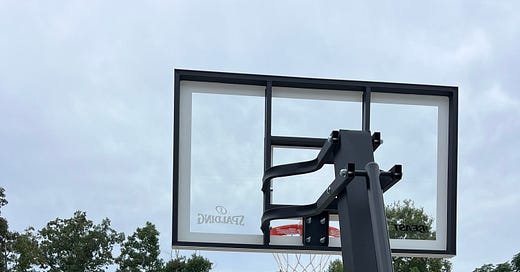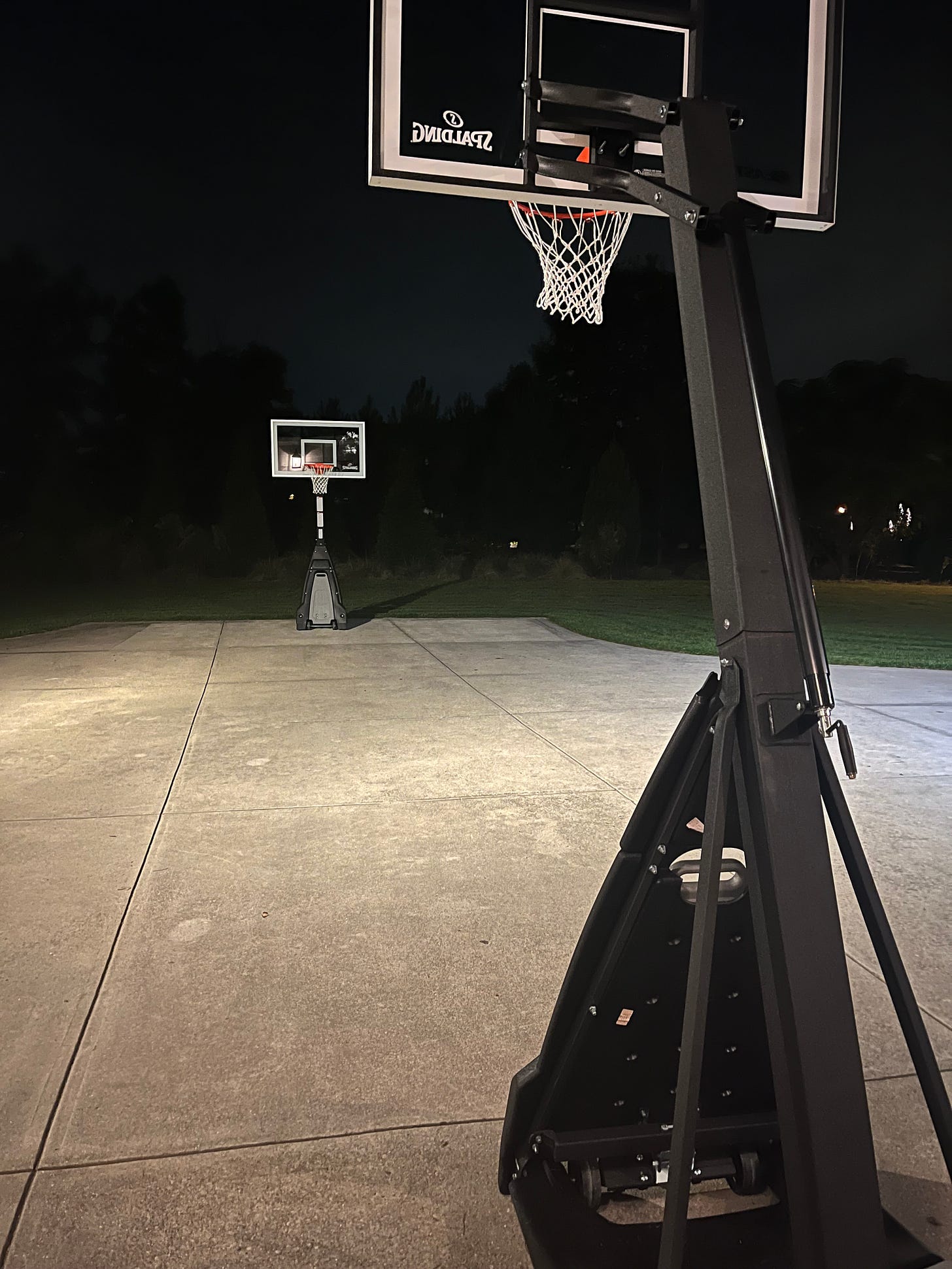How to Play Basketball With Kids, Summary
How not to play basketball. Trimming to truth. Eleven tips to make basketball more enjoyable.
Here’s a quick summary of my two-part series, “How to Play Basketball With Kids.”
Part 1 is a personal story subtitled “How Not to Play Basketball.” It describes some of the good and bad decisions I made as a teenager. In addition to being a Gym Rat, I was a hardworking student, a cheater and a thief. Though I had a bad attitude when it came to certain aspects of basketball and public school, I enjoyed independent reading. Here’s the most important paragraph.
My English teachers were worried about me. Each semester they asked us to do 1500 pages of independent reading. I gladly visited the school library and local bookstores, found interesting books and read them. In fact, I loved this independent reading. It was the best part of high school.
Part 2 is a long, winding read that A) attempts to explain our enjoyment of basketball in terms of evolutionary theory, and B) emphasizes “trimming to truth.” Here’s what I mean by that in the context of playing basketball.
Paying attention to the negative and positive feelings during a game helps us make adjustments to bring the game in line with our longterm goals.
It concludes with eleven tips to make basketball more fun. Here are those tips.
Tip 1 - Play the game as described. That is with two baskets, one on each end of the court. The half-court version of the game can feel contrived and lacks the speed and excitement of the full court version. In the full court version, the objectives are obvious and movements predictable. Move the ball down court, or prevent the movement of the ball down court. Offend and defend. The half-court version can be confusing. “Do I need to take the ball out past the three point line before shooting?” Further, the full court game motivates a great cardiovascular workout.
Tip 2 - Play the game with the hoop height proportional to the player height. A 48” tall child isn’t going to have much fun shooting a full-size basketball at a 10’ tall hoop. His shooting percentage is probably going to be less than five percent in that case. Lower the hoop and get a child’s size or women’s ball to increase his or her scoring percentage.
And this is another reason to play the full-court version of the game: Dad’s hoop can be set to 10’ and Johny’s hoop can be set to 8’. Keep father and son equally challenged. Remember it’s a game.
Tip 3 - Don’t block your child’s shots, or rarely block your child’s shots. In order to make the game fun and challenging for both players take away dad’s height advantage. “Parents can’t block shots.”
Tip 4 - Dad should apply light full court pressure, “trying” to steal the ball and “inhibit” the child’s progress up the court. This will give your child a lot of practice dribbling the ball under pressure. Obviously dad can steal the ball and prevent the child’s forward progress if he gives it his all, but that’s not the goal. Act like you're playing hard, but go easy enough to create a surmountable challenge. Just running up and down the court dribbling the ball under pressure is a huge benefit in term of exercise and learning.
Tip 5 - One “outcome” of this full court pressure (Tip 4) should be that dad goes for the steal, but “misses the ball.” The child seeing the opportunity, gets past dad, dribbles his fastest toward the basket and gets an open shot at the hoop. This is really fun for Johnny, and he’ll get practice high speed dribbling and shooting quickly with dad “racing” down the court to catch up. Dad should put on his best act of going for the steal and allowing Johnny to get past him. In 30-45 minutes of playing this style of basketball your kid will probably get a few dozen quality layup opportunities. There’s no better way to practice shooting than in a “real game” like this.
Tip 6 - Let your kid win until they’re old enough to deal with the loss. But keep the game close, but not too close. Even tying the score can be enough to bring a youngster to tears, so be careful and focus on the longterm. My 13 year old can handle a loss, but my 6 year old cannot. He’ll quit playing if he loses. I’m pretty sure this is normal child behavior because all of my children do or did this as well as my younger half-brother when I was a teenager. He is thirteen years younger than me. Could not handle losing a soccer game to me when he was 6 years old.
Tip 7 - Dad should dribble the ball to match the child’s skill level. “Let your child steal the ball” by dribbling in ways that make it possible for him to steal it. Don’t mostly back down court like Magic Johnson or blow by him like Jordan. Instead often dribble high and in front with only your right hand. Try to keep the ball away from your child with this high, one-handed, novice-style dribble. It will be more fun for both of you and will lead to more steals. As your child gets better at stealing the ball, increase the sophistication of your dribbling. Your goal is to create challenge that your child can overcome with good effort. Overcoming a long series of small and ascending challenges builds his confidence and independence.
Tip 8 - Help your child learn how to win with integrity and learn how to lose like an adult. Think of basketball as a vehicle to building character. The important life skill isn’t being able to dribble through your legs, but rather becoming a virtuous leader. Your challenge as parent is to become more virtuous and to raise your child to be virtuous. Playing basketball can help with these goals. Most sports can.
Tip 9 - Encourage your child to organize pick-up games with other children in the neighborhood. You might need to model this the first few times. This is a great way to teach your kids how to make friends and is a great life skill for them to possess.
Tip 10 - Setup outdoor lighting to encourage night play. Night play is cooler and can be more enjoyable than playing under a bright, hot sun. Your driveway probably already has outdoor lighting, but you might consider adding more spotlights. Your kids will remember these night games. And your house will be the place other kids in the neighborhood come to play ball. This is probably a good thing, but beware.
Tip 11 - One-on-one, full court with your child is probably the best place to start, but once your child has the fundamentals down, i.e. dribbling, shooting, stealing and rebounding, add more players to incorporate passing and team communications. Passing and team communication are really important aspects of the game (and life), so upping the sophistication to a two-on-two game can be valuable. But it’s harder keep the game enjoyable and “fair” when you add sibling and neighbors. It takes a while to teach the older kids the ways to make the game enjoyable for the younger ones. My 13 year old will give my 6 year old hell by blocking shots, stealing the ball and calling travels. So we’re coaching her to go easy, but it can still be frustrating for the younger kids playing with big kids since the big kids are out to win. If adding more players isn’t enjoyable, go back to one-on-one.
If you set-up a full-court with adjustable height hoops and create surmountable challenges for your child, basketball can be an enjoyable way to exercise and build character.





